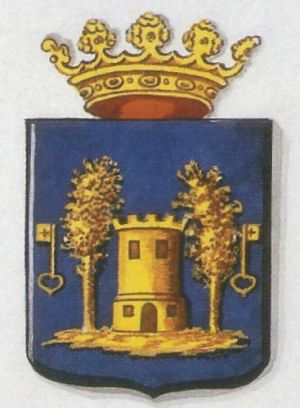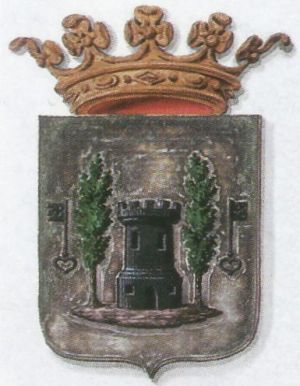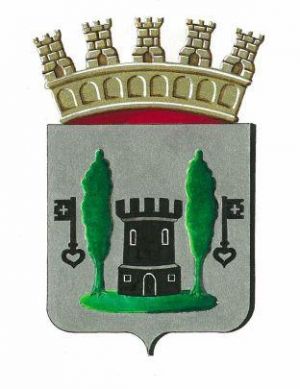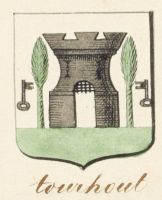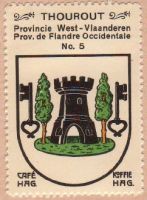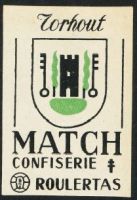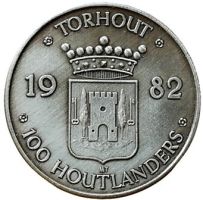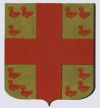Torhout
|
Country : Belgium Province : West-Vlaanderen
|
| Dutch |
|
| English | blazon wanted |
Origin/meaning
The arms were granted on November 10, 1819 and changed on January 25, 1842 and confirmed on October 13, 1993 with a different crown.
The oldest seal of the city of Torhout dates from the late 13th century and shows a tower as a canting element (Tor from toren = tower), with a fleur-de-lis and a ball. A second seal, known since 1302 shows the tower between two trees, which are also canting (hout=wood).
A third seal, dating from 1369 shows a completely different composition, with two keys flanked by two oak branches and a bird.
The last seal of the city, known since 1557 combines the elements, showing a tower flanked by two keys. This idea was also used in the early 19th century when the arms were granted, the tower was now flanked by both the trees from the older seals, and the keys from the newer seal.
The meaning of the keys is not known.
The first arms were shown in the Dutch national colours, as in 1813 the mayor applied without indicating the colours. The arms were thus granted in the national colours. When the arms were confirmed after the Belgian independence, the colours were changed. In 1993 a mural crown was added, to indicate that Torhout is a historical city.
The arms in the Koffie Hag/Café Hag albums +/- 1930
The arms on a police badge (source)
The arms on a Roulertas Confiserie label
Literature: Servais, 1955
This page is part of the Belgium heraldry portal/ Belgische overheidswapens/ Armorial de Belgique
|
|
